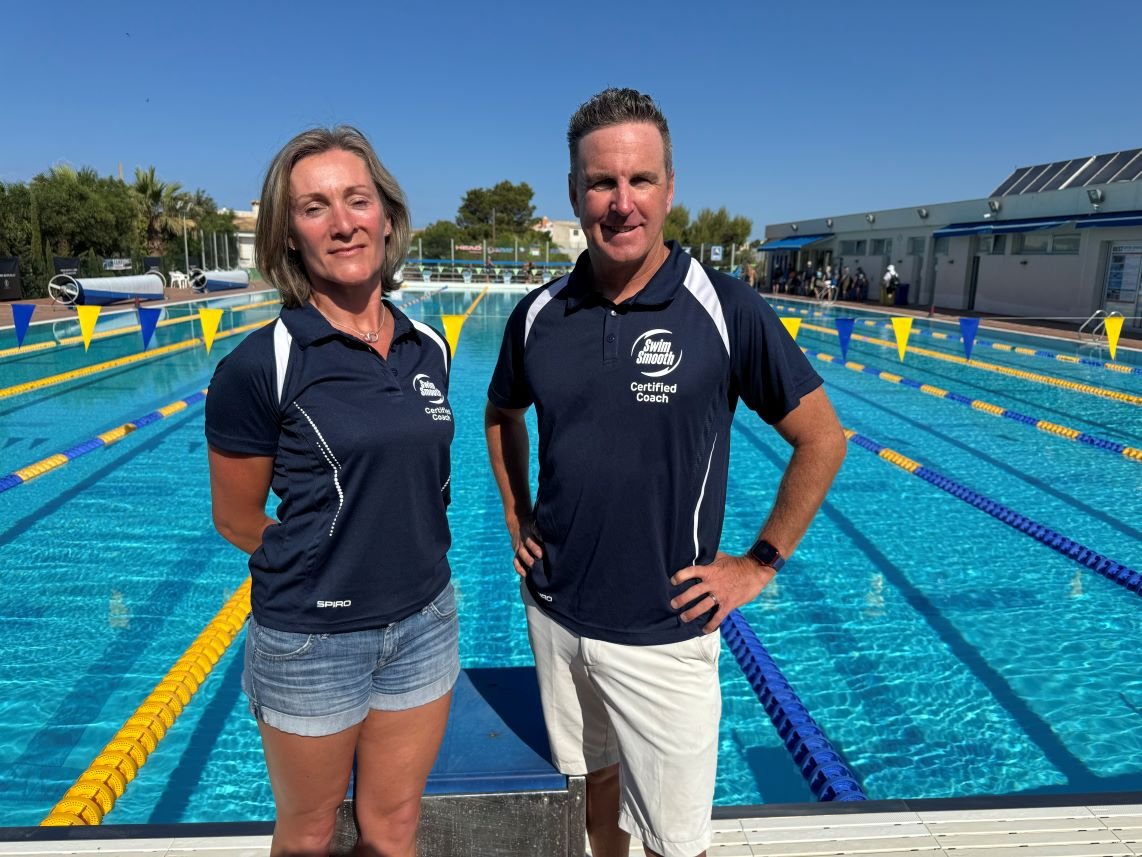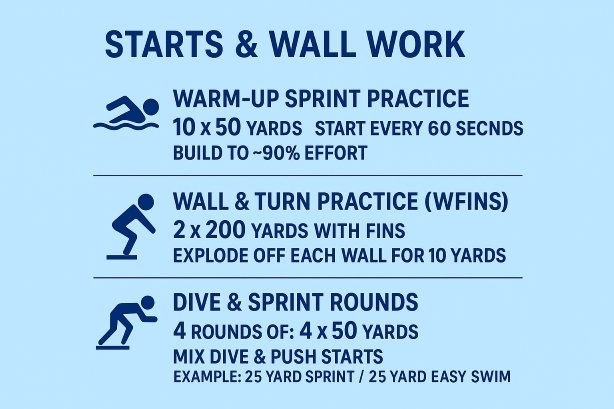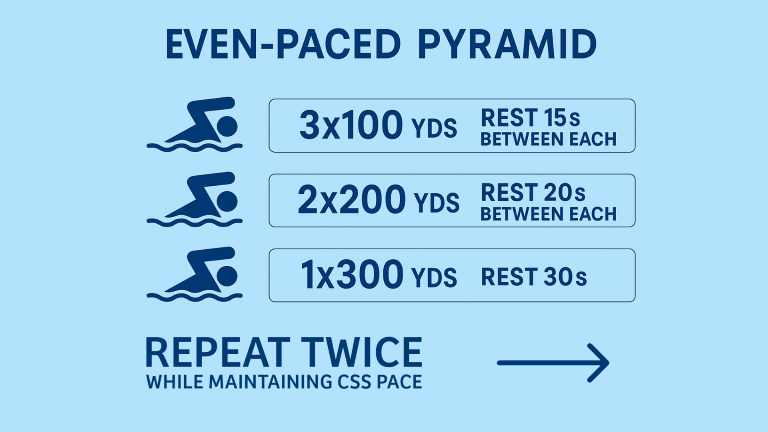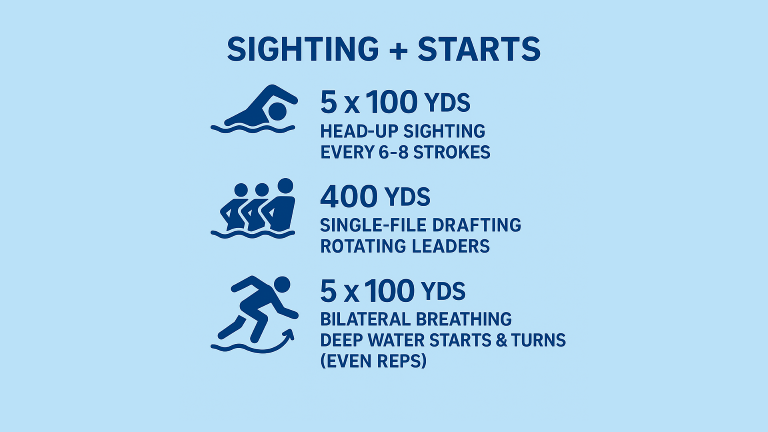Competitive Swimming Training for Sprint and Distance Swim Events
Originally developed in collaboration with Paul Newsome of Swim Smooth
At Swim Smooth LA, we work with athletes of all backgrounds—from short-course sprinters to long-distance ocean racers. One question we hear often:
“Can I train for both ends of the spectrum without sacrificing performance?”
The answer is a confident yes.
With intentional planning and smart programming, you can maintain your sprint explosiveness and grow your endurance engine. Whether you're aiming to break your 50yd PR or prepping for a summer 5K in the Pacific, here’s how to structure your competitive swimming training regiment for range and resilience.
Competitive Swimming Training: Sprint Sets
If you’re building toward distance, it’s easy to let top-end speed fall by the wayside. But incorporating sprint work every 10–14 days keeps that fast-twitch edge alive—and often helps with your starts, finishes, and efficiency in all distances.
When to do it? Early in a session, when you’re fresh and focused.
What to focus on? Short, sharp efforts with intention—not junk meters.
Swim Smooth LA Sprint Set Idea:
Starts & Wall Work:
1. Warm-Up Sprint Practice
10 x 50 yards — Start every 60 seconds (this includes swim + rest)
Swim each 50 as a build: start steady, then gradually increase speed to about 90% effort by the end.
Focus: Good technique, control, and a strong finish.
2. Wall & Turn Practice (w/fins)
2 x 200 yards with fins
Coming in HOT ! Approaching the last 10yds & exploding off each wall for 10yds in Sprint mode with a nice cruise in between. Great time to check in on the efficiency of your flip turn!
3. Dive & Sprint Rounds
4 rounds of: 4 x 50 yards
Mix it up: do some dive starts (from the edge of the pool), some push starts (from the wall).
Alternate effort within each 50-yard swim:
Example: 25-yard sprint + 25-yard easy swim
Focus: Quick starts, short bursts of sprinting, and active recovery.
We’ve seen athletes gain speed in longer races after sharpening their power in sets like these.
Threshold (CSS) Training: The Endurance Backbone
Critical Swim Speed (CSS) training is your go-to for building stamina without grinding endlessly. These sessions help train your body to hold strong aerobic paces for longer—and they make a big difference come race day.
At Swim Smooth LA, we always run at least one Threshold focused workout every week. If you’re in the pool 4–5 times weekly, you might aim to do a second one a few days later.
Swim Smooth LA CSS Set Suggestion:
Even-Paced Pyramid: ‘Keeping you honest’
3 x 100 yards (+15 seconds rest between each)
→ Swim 100 yards three times. rest for 15 seconds between each of them.2 x 200 yards (+20 seconds rest between each)
→ Swim 200 yards twice, resting 20 seconds between them.1 x 300 yards (+30 seconds rest)
→ Swim 300 yards once, then rest for 30 seconds.Repeat twice while maintaining your CSS pace. You can even reverse the set - finishing with the 100’s.
Open Water Skills: What the Pool Can’t Teach
Speed and endurance are key—but so is adaptability. If you’re racing in the ocean, lake, or river, open water skills like sighting, drafting, and efficient turning can save you time and energy.
Even if your training is mostly pool-based, simulate open water conditions every couple weeks. It can be as simple as turning in deep water, practicing head-up swimming, or group drafting in a shared lane.
LA Open Water Skill Set:
Sighting + Starts:
1. Sighting Practice
5 x 100 yards — Lift your head to sight every 6 to 8 strokes
In open water, you need to lift your head occasionally to stay on course (called sighting).
In this drill, swim 100 yards while briefly lifting your eyes just above the surface every 6–8 strokes, then quickly return the head to a neutral position, exhaling steadily.
Focus: On a barely lifting the head so only the eyes are above the surface, to avoid the legs dropping & keep you more streamlined. You may find increasing the arm turnover just slightly as you sight may help.
2. Drafting Drill – Group Swim
400 yards in single-file line, rotating leader every 50–100 yards
Swim closely behind another swimmer (about a foot off their toes) to reduce water resistance and conserve energy — a key strategy in open water races.
After a set distance, the leader rotates to the back and someone else takes over.
Focus: Stay tight in the draft without tapping feet, and practice smooth transitions when rotating the lead.
3. Breathing & Deep-Water Start Practice
5 x 100 yards
Odd-numbered reps (1, 3, 5): Practice bilateral breathing — Every 3, 5 or 7 strokes.
Even-numbered reps (2, 4): Simulate a race start by beginning in deep water (no wall push-off). Tread water to start, then take off smoothly as you approach the wall, turn without touching the wall.
If there’s enough room in your lane, you could try simulating making a turn around a buoy with a corkscrew turn - rolling onto your back, taking one stroke, turning & rolling back on to your front to continue on.
Focus: Controlled breathing, smooth starts, and race-like turns.
These workouts are not only technical—they’re fun, social, and race-specific.
Bringing It All Together
The beauty of training variety is that it makes you a smarter, more adaptable swimmer. By rotating through sprint, threshold, and open water sessions over a two-week cycle, you’re not choosing either speed or stamina—you’re developing both.
Some of our athletes even report better sprint times after adding structured endurance and open water work into their plan.
Final Takeaway
With an intentional competitive swimming training regiment you can prepare for both 50yds sprints and 5km swims—without compromise. The key lies in smart structure, consistency, and trusting the process.
Next week, we’ll explore pacing strategies to help you get the most out of every race distance. Stay tuned.
—
Coach Lorna
Swim Smooth Los Angeles by Fluid Movement
In collaboration with Paul Newsome – Read the Original Article





